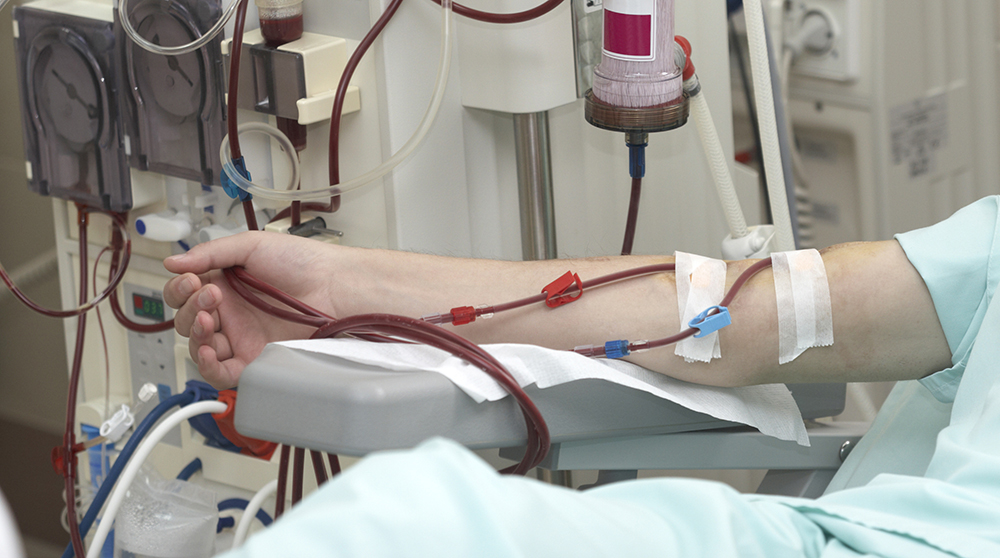When kidney failure develops, patients require dialysis to replace the work of the kidneys by cleaning the blood from waste products, excess fluids, and other elements. In order to do dialysis, one must gain access to the blood, hence, the term: Dialysis Access, often considered the patient’s “lifeline”. Our doctors at the Kidney and Hypertension Center will help you gain an understanding of the different types of dialysis accesses, and determine which type is right for you. There are 2 dialysis modalities: Hemodialysis and peritoneal dialysis. Each has its types of dialysis access. These are created either surgically or in a minimally invasive way.
Hemodialysis Access
Hemodialysis is a process in which the blood is pulled from the dialysis access (“pull” line), circulated outside the body through a dialysis machine, and then pumped back into the bloodstream through a different site (“return” line) into the dialysis access, hence, forming a circuit (to learn more click here: Hemodialysis). Three types of hemodialysis access exist:
Fistula
A Fistula is a hook-up made surgically between an artery and a superficial vein in the upper extremity (usually, non-dominant arm). The flow in the vein is then immediately increased several folds which helps in its development or maturation. This process may take 6-8 weeks, and sometimes, the vein may require a minimally invasive procedure to help it mature. The fistula is considered to be the preferred type of dialysis access because it lasts longer, performs better, and is less likely to become infected or clotted. It requires the insertion of 2 needles in it with each dialysis, one for the pull and one for the return.
Graft
If the superficial veins are too small or not suitable for a fistula, a graft will then be considered as a good alternative. It is a soft, synthetic, and flexible tube that is passed under the skin either in the forearm, upper arm, or even the upper thigh and hooked up on one side to the artery and the other side to a deep vein. The graft is already developed (mature) and can be used 2-3weeks after its insertion. Other advantages are better blood flow and lower risk of infection than a hemodialysis catheter. This also requires the insertion of 2 needles in it similar to the fistula.
Hemodialysis Catheter
A Catheter is a long, plastic tube with part of it hanging outside the chest or thigh and has 2 heads attached to it, the rest is threaded under the skin and then passed into a vein in the neck, chest, or groin. A catheter can be used immediately after insertion, is generally used as a temporary access and a transition to a fistula or graft. It is associated with a higher risk of infections and can cause narrowing or clot formation in the neck, chest, or groin veins.
Peritoneal Dialysis (PD) Access
Peritoneal Dialysis (PD) allows the cleansing of the blood through the lining of the abdominal cavity and using a specialized sterile solution (to learn more, click here: Peritoneal Dialysis). A special catheter will be necessary to perform PD.
Peritoneal Dialysis Catheter
A Peritoneal Dialysis catheter is a small, transparent flexible tube with part of it hanging outside the abdomen and the rest is threaded under the skin, through the abdominal wall, and into the abdominal cavity. There are different designs of PD catheters, but the purpose is the same, to allow the filling and draining of the sterile solution (after it is allowed to dwell for a certain time) in and out the abdominal cavity. The PD catheter requires special handling upon filling and draining the fluid in order to avoid infection.
Our practice is affiliated with a state-of-the-art ambulatory surgical center (In operation since December 2001) to address all the dialysis access-related procedures. For more information, please check the Dialysis Access Center of Cincinnati.


